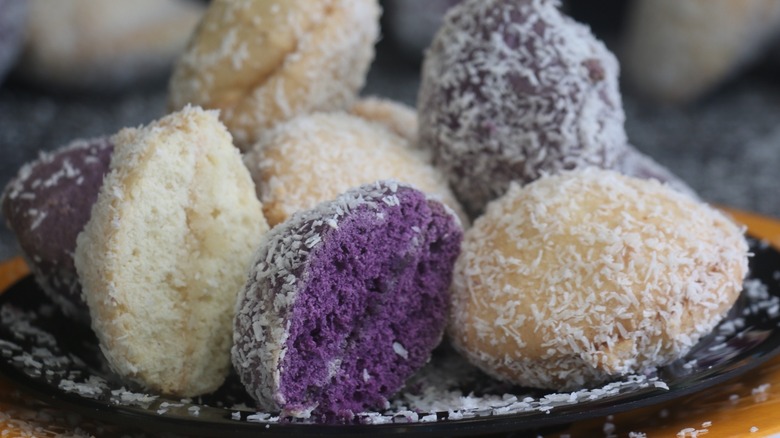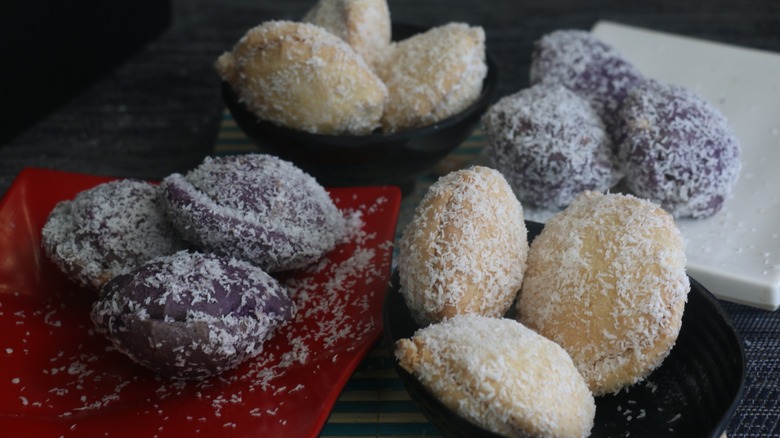Double Buddy Bread Is The Filipino Treat You Need To Try If You Love Pan De Sal
If you're a fan of pan de sal, then you have to try double buddy bread from the Philippines. Double buddy bread, also known as yo-yo bread, double body bread, lambingan bread, or buddy-buddy bread, diverges from pan de sal, which is a versatile, staple Filipino bread roll used in both savory and sweet applications. Double buddy bread, on the other hand, is more of a sweet than savory treat, positioning itself as a standalone snack or dessert rather than a conventional bread or dinner roll.
While the history and background of pan de sal are well documented, the exact history of double buddy bread remains elusive. Filipinos, however, have enjoyed the bread for at least two to three decades now (as per the husband of a Tasting Table staff member born and raised in Bacolod City). It's possible that double buddy bread shares a similar origin as besos pan dulce, or Mexican yo-yo bread, which was introduced by the Spaniards, who also colonized the Philippines.
In any case, the story behind this dish's name is sweet and somewhat romantic. "Lambingan" means "affection" in Tagalog, and you have two pieces of bread tenderly hugging each other to make a "double buddy," sandwiching a layer of cream, margarine, or unsalted butter between them. Sweetened condensed milk works, too.
What makes up double buddy bread and how to enjoy it
In terms of texture, double buddy bread is a bit crumbly and a little like a not-too-sweet pound cake. Since milk powder is a common ingredient in it, you also get a creamy taste with each bite. The outside of the bread usually consists of a generous covering of desiccated coconut rather than bread crumbs, as you would find with pan de sal. The other common ingredients of Filipino double buddy bread include water, margarine or butter, brown sugar, eggs, vanilla extract, baking powder or baking soda, and all-purpose flour.
Sometimes, a baker adds violet food coloring or ube extract to the batter to give it a purple tint. Double buddy bread can also be duo-toned, with one of the bread pieces being white, yellow (from the margarine), or plain vanilla-hued, while the other is a whimsical purple. As mentioned earlier, the filling within is usually creamy, and the most common one served is plain margarine. To enjoy a double buddy bread, simply hold one in your hands, flatten it a little if it's too plump, and take a bite.
Each satisfying bite should have sweet, tender bread and creamy filling. While double buddy bread is great as a standalone snack, it can also be paired with lunch foods commonly found in the Phillippines, like barbecue meat skewers. To the West, double buddy bread may seem like a delicacy, but in fact, it's an everyday staple, a common man's bread — just like its more famous cousin, pan de sal.

